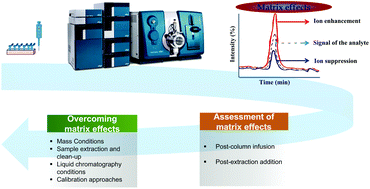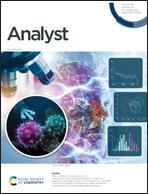Overview, consequences, and strategies for overcoming matrix effects in LC-MS analysis: a critical review
Abstract
The high-performance liquid chromatography-mass spectrometry (LC-MS) technique is widely applied to routine analysis in many matrices. Despite the enormous application of LC/MS, this technique is subjected to drawbacks called matrix effects (MEs) that could lead to ion suppression or ion enhancement. This phenomenon can exert a deleterious impact on the ionization efficacy of an analyte and subsequently on the important method performance parameters. LC-MS susceptibility to MEs is the main challenge of this technique in the analysis of complex matrices such as biological and food samples. Nowadays, the assessment, estimation, and overcoming of the MEs before developing a method is mandatory in any analysis. Two main approaches including the post-column infusion and post-extraction spike are proposed to determine the degree of MEs. Different strategies can be adopted to reduce or eliminate MEs depending on the complexity of the matrix. This could be done by improving extraction and clean-up methods, changing the type of ionization employed, optimization of liquid chromatography conditions, and using corrective calibration methods. This review article will provide an overview of the MEs as the Achilles heel of the LC-MS technique, the causes of ME occurrence, their consequences, and systemic approaches towards overcoming MEs during LC-MS-based multi-analyte procedures.

- This article is part of the themed collection: Analyst Review Articles 2021


 Please wait while we load your content...
Please wait while we load your content...